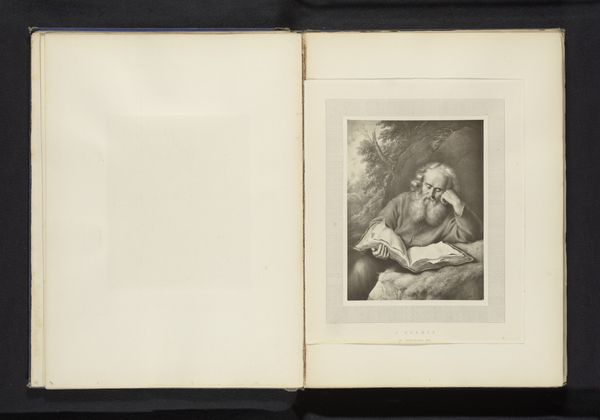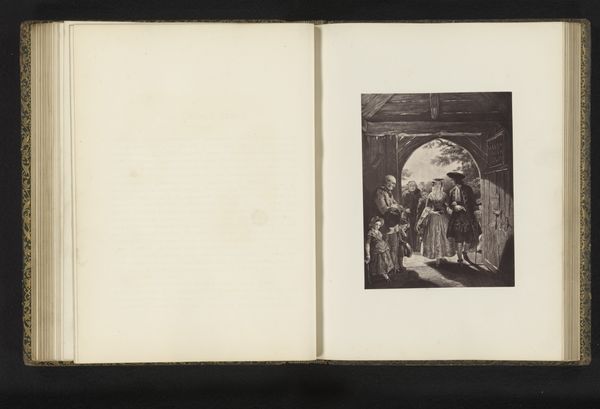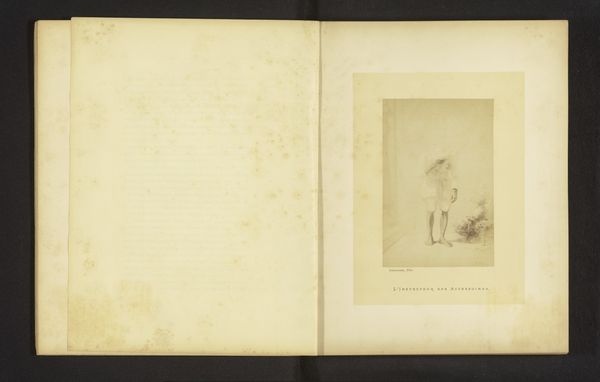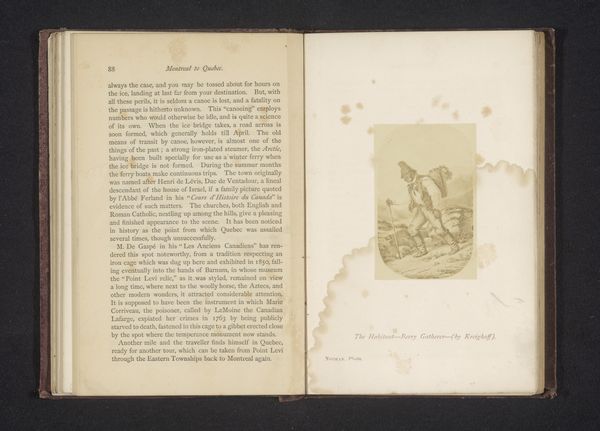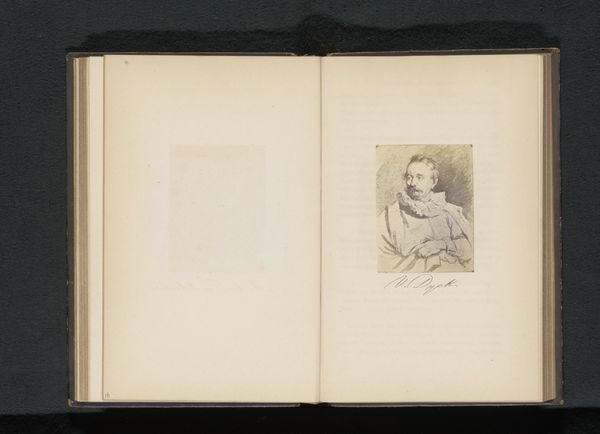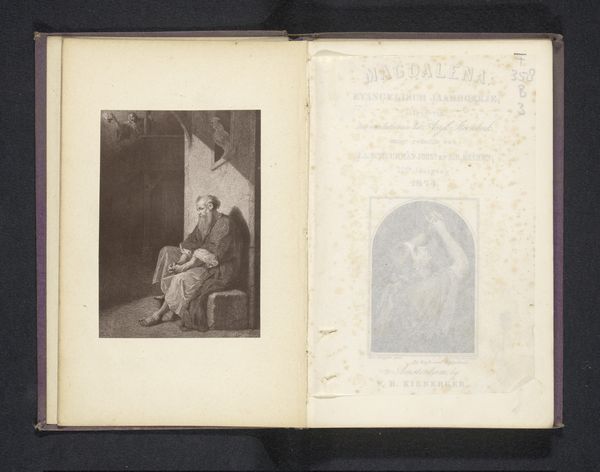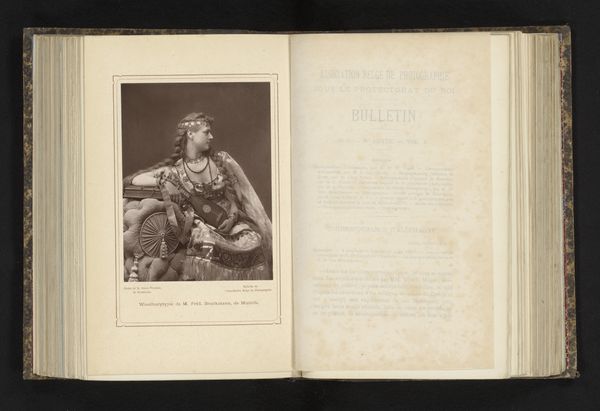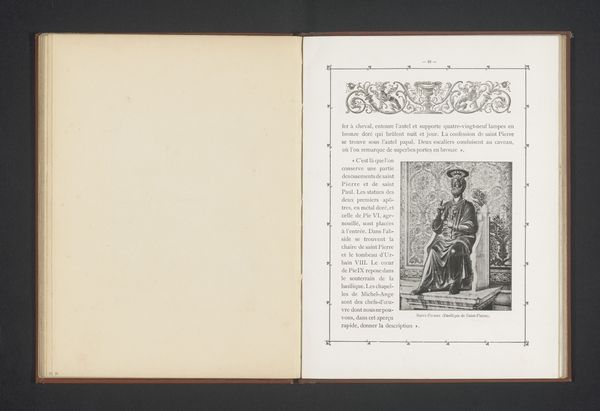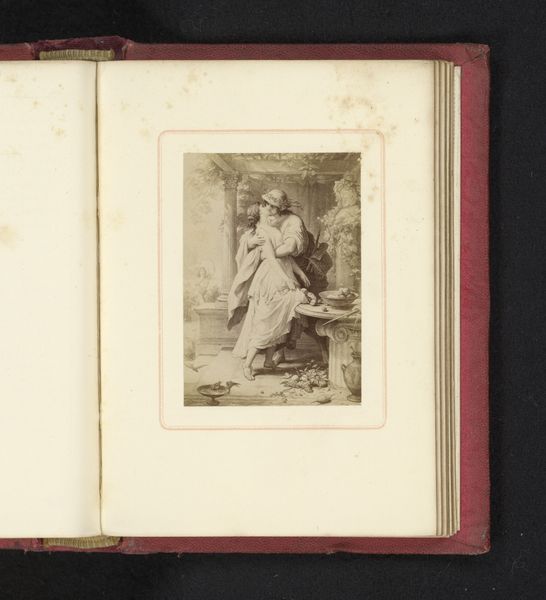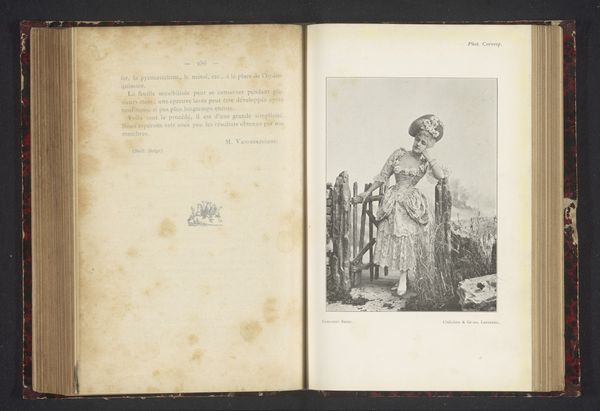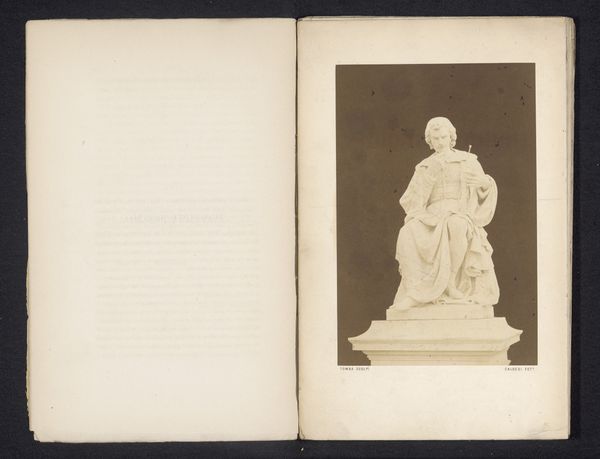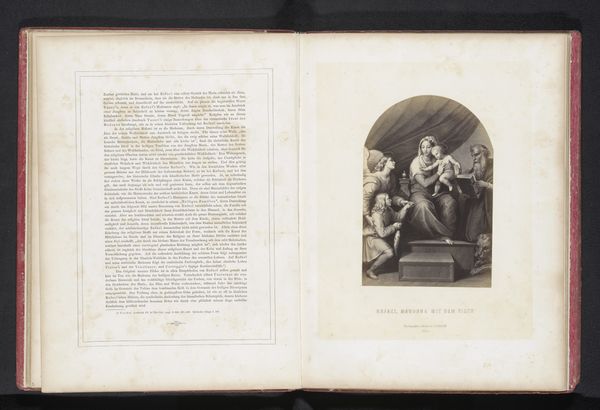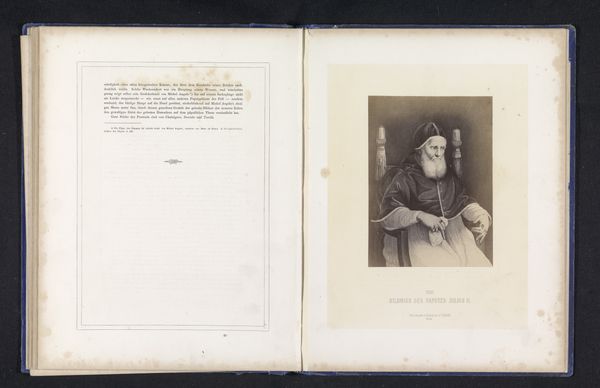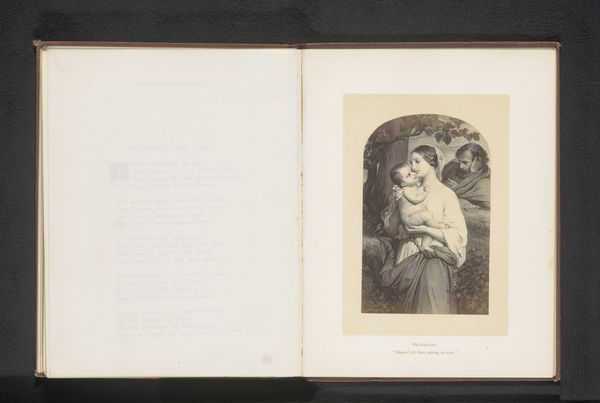
Fotoreproductie van een schilderij van twee zittende vrouwen before 1860
0:00
0:00
Dimensions: height 85 mm, width 68 mm
Copyright: Rijks Museum: Open Domain
Curator: Before us is a remarkable artifact—a photographic reproduction of a painting featuring two seated women. The original artwork’s title is "Fotoreproductie van een schilderij van twee zittende vrouwen" and we estimate it was created before 1860. The photographer is Pieter Oosterhuis. It’s an albumen print, and you can find it, quite appropriately, housed right here at the Rijksmuseum. Editor: Well, immediately, I sense a poignant intimacy. The figures, caught in a tender embrace, give the impression of this profound familial connection—there's the protection and comfort, right? Yet, I’m seeing some elements like color and lack of shadows that strike me as distant...almost ethereal. Curator: It’s fascinating how photography in this era aimed to both replicate and, in some ways, elevate painting. The albumen print process itself lends a warmth, an almost sepia-toned glow. And observe how the composition, enclosed within an oval, borrows directly from portrait painting traditions, enhancing that ethereal, sentimental quality you're picking up. Editor: Mmh, precisely, It's as if it is borrowing all of this pre-established symbology and aesthetic sentiment and translating it for what photography means now. Thinking of Oosterhuis’ artistic license—this reproduction, for all of its photographic qualities, seeks a particular artistic sensibility from painting. It brings to mind that age-old debate about photography as pure representation versus photography as art, shaping reality through a particular lens and skill. Curator: A pertinent point. While striving for accuracy in reproducing the painting, the act of photographic reproduction invariably introduces its own interpretations. In terms of composition, do you see how Oosterhuis is organizing visual rhetoric between two worlds and interpreting one from the other? The photographer adds or takes away in terms of sharpness or focal cues based on compositional structure of two very separate yet overlapping, even cannibalizing, approaches. The column of stylized text is not the primary focus here as with other of his "Fotoreproducties". Editor: So beautifully put. Ultimately, as a reflection on memory, what does this moment mean? Oosterhuis helps the artist he's representing live on, as all art will borrow from other mediums—all great art starts somewhere! Curator: An apt final word indeed, recognizing how images like these become lasting echoes through time.
Comments
No comments
Be the first to comment and join the conversation on the ultimate creative platform.
